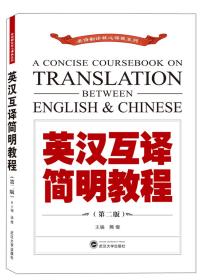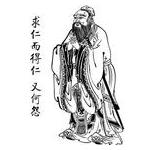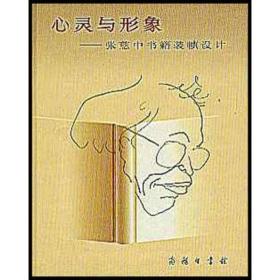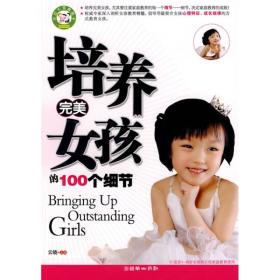
英汉互译简明教程(第2版)/英语翻译核心课程系列
¥ 29.77 5.5折 ¥ 54 全新
仅1件
山东泰安
认证卖家担保交易快速发货售后保障
作者熊俊 编
出版社武汉大学出版社
出版时间2019-08
版次1
装帧平装
货号R2库 11-12
上书时间2024-11-13
- 在售商品 暂无
- 平均发货时间 24小时
- 好评率 暂无
- 最新上架
商品详情
- 品相描述:全新
图书标准信息
- 作者 熊俊 编
- 出版社 武汉大学出版社
- 出版时间 2019-08
- 版次 1
- ISBN 9787307210387
- 定价 54.00元
- 装帧 平装
- 开本 16开
- 纸张 胶版纸
- 页数 306页
- 【内容简介】
-
英语行文,突出能力培养,强化实际应用,适应英语专业英语授课教学实际。
立足英汉互译,旨在帮助学生学习和掌握英、汉两种语言的差异及英汉互译的基本理论与翻译技巧。以往的翻译教材往往偏重培养学生英译汉的能力,对汉译英的能力没有强调和重视。
实用性强,用例新又颇具典型,理论言之有理,持之有据,逻辑严密,结构紧凑。译例丰富鲜活,选材广泛,深入浅出,练习较多,能满足翻译教学与自学译例需要。
具有多功能性,可以作为系统学习翻译的教科书,也可以作为工具书使用。适合广大英语专业师生、英语自学人员、翻译工作者、爱好者使用。 - 【作者简介】
-
熊俊,女,教授,1972年11月出生于湖北省麻城市。湖北工程学院翻译研究中心主任、外国语学院英语系主任、教学督导组长,中国翻译认知研究会常务理事,中国先秦史学会国学双语研究会常务理事,中国翻译协会专家会员.湖北省翻译协会理事,武汉翻译协会常务理事。美国期刊International Journal of Language and Linguistics(IJLL)编委,澳大利亚季刊Journal of Sociology编委。主要讲授英汉翻译、翻译批评与赏析、高级翻译实践等课程。
1996年6月毕业于武汉工业大学(现武汉理工大学)外语系,获英语语言文学学士学位:2010年获华中师范大学英语语言文学硕士学位。2014年12月晋升为教授。主要研究方向为翻译理论与实践。发表论文30余篇,英文专著l部,主编、参编翻译教材5部,主持并完成省校级科研项目8项。曾先后应邀出席第十八届世界翻译大会(中国上海2008)、第六届亚洲翻译家论坛(中国澳门2010)、国际翻译与跨文化交流大会(澳大利亚2011)、第七届亚洲翻译家论坛(马来西亚2013)、第二十届世界翻译大会(德国2014)、第五届亚太翻译与跨文化研究论坛(美国2016)交流并宣读论文(相关论文均被收入会后公开出版的论文集)。多次担任高水平翻译学术会议分论坛主持人或评议人或作总结发言。近年翻译材料60余万字。
获颁中国先秦史学会国学双语研究会“特别贡献奖”、湖北省“十佳中青年翻译学者”、“湖北省译协、武汉译协2010—2012年优秀理事”称号,8次获湖北省翻译协会学术成果奖(5个“二等奖”、3个“三等奖”),5次获“湖北省优秀学士学位论文(指导教师)”称号。“第二届全国口译大赛(英语)”优秀指导教师奖.“第四届海峡两岸口译大赛大陆赛区湖北分赛区选拔赛”三等奖(指导教师),第二十五届湖北省翻译大赛英语专业A组笔译组特等奖“优秀指导教师”和“优秀组织工作者”。曾多次获校级“教学成果奖”、“教学优秀奖”、“年度考核优秀奖”、“专业技术考核优秀奖”、“优秀共产党员”、“三育人”先进个人、“优秀学士学位论文(指导教师)”、“优秀班主任”、“优秀实习指导教师”、“优秀女教职工”等奖励。 - 【目录】
-
Chapter 1 General Introduction
1.1 Definition of Translation
1.2 Classification of Translation
1.3 History of Translation
1.3.1 Translation in the Western World
1.3.2 Translation in China
1.4 Trend of Translation Studies
1.5 Prerequisites for Translators
1.6 Principles or Criteria of Translation
Chapter 2 Process and Methods of Translation
2.1 Process of Translation
2.1.1 Comprehension
2.1.2 Expression
2.1.3 Revision
2.2 Methods of Translation
2.2.1 Literal Translation and Free Translation
2.2.2 Foreignization and Domestication
2.2.3 Transliteration
Chapter 3 Contrastive Studies Between English and Chinese
3.1 On Lexical Level
3.2 On Sentence Level
3.2.1 Synthetic vs Analytic
3.2.2 Subject vs Topic
3.2.3 Impersonal vs Personal
3.2.4 Static vs Dynamic
3.2.5 Active vs Passive
3.2.6 Hypotactic vs Paratactie
3.2.7 Substitution vs Repetition
3.2.8 Complex vs Simplex
3.2.9 Abstract vs Concrete
3.2.10 Indirect vs Direct
3.3 On Text Level
Chapter 4 Translation Techniques
4.1 Diction
4.1.1 Word Meanings (Conceptual Meaning, Stylistic Meaning,Linguistic Meaning and Pragmatic Meaning)
4.1.2 Choice of Word Meanings
4.2 Repetition
4.2.1 Repetition in E-C Translation
4.2.2 Repetition in C-E Translation
4.3 Amplification
4.3.1 Amplification in E-C Translation
4.3.2 Amplification in C-E Translation
4.4 Omission
4.4.1 Omission in E-C Translation
4.4.2 Omission in C-E Translation
4.5 Conversion
4.5 . 1 Conversion in E-C Translation
4.5.2 Conversion in C-E Translation
4.6 Inversion
4.6.1 Inversion in E-C Translation
4.6.2 Inversion in C-E Translation
4.7 Negation
4.7.1 Negation in E-C Translation
4.7.2 Negation in C-E Translation
4.8 Change of Voices
4.8.1 Change of Voices in E-C Translation
4.8.2 Change of Voices in C-E Translation
4.9 Division
4.9.1 Division in E-C Translation
4.9.2 Division in C-E Translation
4.10 Combination
4.10.1 Combination in E-C Translation
4.10.2 Combination in C-E Translation
Chapter 5 Translation of Long Sentences
5.1 Steps in Translating Long Sentences
5.2 Methods of Translating Long Sentences
5.2.1 E-C Translation of Long Sentences
5.2.2 C-E Translation of Long Sentences
Chapter 6 Translation of Titles of Books and Articles
6.1 Translation of Titles of English Articles
6.2 Translation of Titles of Chinese Articles
6.3 Translation of Titles of English Books
6.4 Translation of Titles of Chinese Books
Chapter 7 Translation and Culture
7.1 Disparity in Western and Chinese Culture
7.2 Translation of Idioms
7.3 Translation of Chinese Dish Names
7.4 Advertising Translation
7.5 Translation of Tourism Writing
Reference Answers to Exercises
Appendix Ⅰ Table on English-Chinese Transliteration(英汉译音表)
Appendix Ⅱ Chinese Phonetic Alphabet and Wade System(汉语拼音和威妥玛式拼音法音节对照表)
Bibliography
点击展开
点击收起
— 没有更多了 —












以下为对购买帮助不大的评价